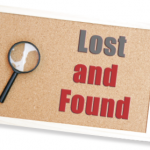
Fotovika / shutterstock.com
It was Christmas Eve, 1996. The pain had become excruciating—it had to be for Kerby to opt to go to the hospital on Christmas Eve because Kerby’s pain tolerance was high. At that point, he had been living with what had ultimately been diagnosed as psoriatic arthritis for about 30 years. That Christmas Eve, the pain was so intense he needed some relief.
In the emergency department, providers tried to snake a large-gauge, 8″ needle into his hip to inject a pain-relieving corticosteroid, but the X-ray showed they hadn’t reached the right spot. Concluding that expert help was needed, Kerby was told, “Just a few minutes, Mr. Hyland. We’ll call in an expert and get you taken care of.”
Perhaps for efficiency’s sake, Kerby wasn’t moved. He was left on the X-ray machine table, needle in place, to wait for the expert. The needle, deep in his hip, added a deep ache to his pain, making him both nauseated and sweaty. He watched the clock tick slowly on the wall, as those “few minutes” turned to hours. In total, it was between two and three hours before the expert walked in the door and, seeing Kerby lying on the X-ray table with a needle half stuck into him, the expert burst into laughter, and the nurse who followed him into the room joined in.
Laughter is typically considered a positive phenomenon, with shared laughter a sign of social alignment and intimacy.1 Although studies have examined the potential therapeutic value of laughter in a wide range of conditions, including rheumatic conditions, the evidence is inconclusive except to note that it is only potentially positive if the patient is laughing.2-4 Asymmetrical laughter, when only one party is laughing, does not communicate social alignment or intimacy.
Asymmetrical Laughter
In clinical interactions, patients commonly use asymmetrical laughter to display knowledge of cultural norms when the topic or activity at hand is considered delicate, embarrassing or otherwise culturally problematic.5,6 Patients also use asymmetrical laughter if laughing while recounting their own troubles in a clinical interaction, as a way to communicate a trouble that is not too overwhelming.7,8
By not responding to such patient laughter with laughter, the physician competently communicates recognition that the trouble, topic or account is, in fact, important to the patient.8,9 Thus, asymmetric laughter, when the patient is laughing and the provider is not, functions to mutually communicate that the topics discussed are culturally sensitive, yet important to the patient.
However, asymmetric laughter when only the provider laughs communicates that something about the troubles or situation is laughable.10 Even if the patient recognizes on one level that it is the situation that is laughable, the patient is the one in that situation, and thus the patient is likely to perceive that the provider believes the patient to be inconsequential.11,12 Asymmetric laughter by providers is likely to be interpreted by patients as exclusionary or having negative social intent (being “laughed at” rather than “laughed with”), which is associated with social rejection and social pain.13,14
Kerby recalls thinking, “Quit screwing off and having a good time and get me taken care of so I can go have my life again!” He doubted the providers were actually laughing at him, but he was still fuming. The pain was so intense, it was difficult to register any of the details of what happened next as they snaked the smaller-gauge, 10″ needle with the tubing through the 8″ needle into his hip, positioning it correctly to deposit the medication.
The providers may have tried to repair the situation, apologizing for laughing, but whether or not they did, Kerby understood they were in an entirely different world than he was. Their world was pain free. Theirs was a world in which pain and discomfort were laughable.
As he left the hospital that night, he thought sarcastically, “And a Merry Christmas to you, too.”
Not Being Taken Seriously
Over the years, Kerby’s condition has elicited considerable unwanted laughter. He was born into an active, athletic, pull-yourself-up-by-your-bootstraps-and-quietly-take-care-of-your-own-problems type of family. His was a family in which people didn’t complain about bumps and bruises. At the age of 7, when Kerby was in 2nd grade, he started having bewildering intestinal troubles. Unable to control his bowels, when Kerby raised his hand to go to the bathroom in class, if the teacher wouldn’t immediately release him, “I crapped my pants right there in the classroom.” His classmates laughed. Kerby felt himself flush, absolutely embarrassed.
He recalls that teachers responded by calling his parents. His parents took him to doctors. Doctors repeatedly said Kerby was fine. They suggested that perhaps he was rebelling and assured his parents that it was all psychosomatic. So the next time Kerby raised his hand asking to go to the bathroom in class, the teachers again wouldn’t release him, with the same result: shame and laughter. No one believed he had no control over his bowels.
Over time, other seemingly disparate symptoms emerged: He had migraines, his joints would swell or give out or cause pain without obvious reason, his toenails would randomly fall off, and severe fatigue would engulf him like a sneaker wave.
Doctor after doctor swept his complaints away with such explanations as “growing pains” or “trick knee” or “not getting enough sleep” or “it’s all in your head”—none of which fit Kerby’s reality. Providers weren’t laughing at him, exactly, but they didn’t believe him either.
Indeed, it wasn’t until 25 years after the humiliations suffered in 2nd grade that Kerby was finally diagnosed with psoriatic arthritis.
The complexity of autoimmune diseases like psoriatic arthritis (PsA) is breathtaking—
so much so that at a time when the surgical world was embarking on heart transplants in the 1970s, diagnostic criteria for PsA was just beginning to be identified, with few studies in adults or juveniles before the 1980s.15,16 Those early diagnostic criteria included dermatologic signs and joint pain but excluded more complicated, internal factors, such as bowel inflammation.17
Expert rheumatologists develop a sensitivity to subtle signs so they can typically identify conditions as being within the family of rheumatic autoimmune disease quickly, but even then, complex cases like Kerby’s are more challenging to diagnose.
Considering that many patients only see a rheumatologist after months, or even years, of seeking medical care for their strange array of complaints, it makes sense that diagnostic delay remains the norm for most people eventually diagnosed with PsA.18 For those whose symptoms have been laughed at or dismissed as psychosomatic, a diagnosis validates suffering. A diagnosis, for patients like Kerby, makes them tentatively willing to crack open the door to medicine again, hoping that this time medicine and its providers won’t let them down.
Unfortunately, treating rheumatic disease can be frustrating for both providers and patients. Rheumatologists may work 80–100 hours a week, opening their laptops after dinner and working until late into the night, only to get up again by 4 or 5 a.m.
Many rheumatologists juggle multiple research projects and collaborate across time zones and continents to conduct clinical trials with large enough sample sizes to find patterns and develop better treatments for their patients. Such research is more often characterized by years of careful work to gain an inch of insight than by major breakthroughs. Even so, the cultural myth of medical miracles dominates everyday expectations of medicine.19 These cultural myths are perhaps a particularly sharp, double-edged sword for rheumatologists.
Rheumatologists have preexisting social capital from the glow of normative cultural admiration for physicians. But given that rheumatic diseases are so complex and dynamic, that research is underfunded and that pharmaceuticals are difficult to develop, the cultural expectation for treatments that can always keep pain at bay and maintain daily functioning is frustratingly unrealistic.
Pharmaceutical companies and the rheumatologists that partner with them continue to strive for silver bullets; they want them so badly that unexpected adverse events might not at first be recognized.
Kerby had gone through a long list of medications for his PsA, and none of them worked any longer. Looking for a new medication, he enrolled in a drug trial for a medication that other patients with refractory disease had responded very positively. Indeed, the findings were so positive in others that when Kerby asked whether the drug could be linked to new tingling sensations in his knees, the providers in the room laughed.
That laughter, which Kerby had heard so many times since childhood, communicated that Kerby’s report of his own sensations was preposterous. It was laughable. His reality had been dismissed, and Kerby felt himself flush, absolutely embarrassed.
A few weeks later, after a stronger adverse event, no one laughed. The impossible had become possible, a unique allergic response to what had been thought of as a miracle drug.
Laughing at the Unexpected
Laughter bursts forth sometimes not because something is funny, but because something is so unexpected, so embarrassingly overwhelming, that laughter becomes a defense against a reality that doesn’t make sense. But for people living that nonsensical reality, laughter may
be heard as being laughable, as being
not believable.
Kerby’s recounted incidents of providers laughing at his troubles—waiting overly long in an uncomfortable situation for a procedure and voicing a worry about a sensation while on a new medication—were instances of asymmetrical provider laughter at another’s troubles. For Kerby, such laughter brings to mind his earliest experiences of being laughed at and not believed. Perhaps particularly patients with rheumatic disease, many of whom have endured months or years of diagnostic delay, may be likely to interpret asymmetrical laughter as another sign of disbelief.
The cultural myth of medical miracles suggests that medications and technology are the core of medical practice. But rheumatologists and their patients know the core of medical practice is trust.
Rheumatologists need their patients to trust them to provide the best currently available care so that patients remain adherent to prescriptions that can prevent further damage.
Patients need their physicians to believe them when they describe even preposterous-
sounding sensations. They need their providers to not leave them in uncomfortable or laughable situations. Patients need their providers to strive not to unwittingly laugh at their troubles.
Laughter has the power to break hard-won trust in an instant. Kerby has not gone to see a rheumatologist in four years now.
M. Cameron Hay, PhD, is a medical anthropologist who has been conducting research with rheumatology patients and rheumatologists for more than 15 years. She is a professor in and chair of the Department of Anthropology at Miami University, Oxford, Ohio.
Kerby Hyland is a citizen scientist who possesses a lifetime of experience with autoimmune disease. He has spent more than 20 years working with physicians and researchers in their efforts to find answers to the complex issues of autoimmune arthritis.
References
- Jefferson G, Sacks H, Schegloff EA. Notes on laughter in the pursuit of intimacy. In Button G, Lee JRE (eds.), Talk and social organization. Multilingual Matters. 1987:152–205.
- Matsuzaki T, Nakajima A, Ishigami S, et al. Mirthful laughter differentially affects serum pro- and anti-inflammatory cytokine levels depending on the level of disease activity in patients with rheumatoid arthritis. Rheumatology (Oxford). 2006 Feb;45(2):182–186.
- Bennett PN, Parsons T, Ben-Moshe R, et al. Laughter and humor therapy in dialysis. Semin Dial. Sep-Oct 2014;27(5):488–493.
- Moura CS, Li R, Lawrie S, et al. Humor in systemic lupus erythematosus. Eur J Rheumatol. 2015 Mar;25(1):5–9.
- West C. Reconceptualizing gender in physician-patient relationships. Soc Sci Med. 1993 Jan;36(1):57–66.
- Haakana M. Laughter as a patient’s resource: Dealing with delicate aspects of medical interaction. Interdiscip J Study Discourse. 2001;21:187–219.
- Heritage J, Robinson JD. Accounting for the visit: Giving reasons for seeking medical care. In: Heritage J, Maynard DW, eds. Communication in Medical Care. New York: Cambridge University Press; 2006:48–85.
- Jefferson G. A note on laughter in ‘male–female’ interaction. Discourse Stud. 2004 Feb;6(1):117–133.
- Haakana M. Laughter in medical interaction: From quantification to analysis and back. J Socioling. 2002;6(2):207–35.
- Mazzocconi C, Tian Y, Ginzburg J. What’s your laughter doing there? A taxonomy of the pragmatic functions of laughter. IEEE Trans Affect Comput. 2020;3045(c):1-19.
- West C. Routine complications: Troubles with talk between doctors and patients. Bloomington: Indiana University Press. 1984.
- West C. Medical misfires: Mishearings, misgivings, and misunderstandings in physician‐patient dialogues. Discourse Process. 1984;7(2):107–134.
- Klages SV, Wirth JH. Excluded by laughter: Laughing until it hurts someone else. J Soc Psychol. Jan-Feb 2014;154(1):8–13.
- Ethofer T, Stegmaier S, Koch K, et al. Are you laughing at me? Neural correlates of social intent attribution to auditory and visual laughter. Hum Brain Mapp. 2020 Feb;41(2):353–361.
- Moll JM, Wright V. Psoriatic arthritis. Semin Arthritis Rheum. 1973;3(1):55–78.
- Shore A, Ansell BM Juvenile psoriatic arthritis—an analysis of 60 cases. J Pediatr. 1982 Apr;100(4):529–535.
- Helliwell PS, Taylor WJ. Classification and diagnostic criteria for psoriatic arthritis. Ann Rheum Dis. 2005 Mar;64 Suppl 2(Suppl 2):ii3–ii8.
- Haroon M, Gallagher P, FitzGerald O. Diagnostic delay of more than 6 months contributes to poor radiographic and functional outcome in psoriatic arthritis. Ann Rheum Dis. 2015 Jun;74(6):1045–1050.
- Dumit J. Drugs for Life: How Pharmaceutical Companies Define Our Health. Durham, NC: Duke University Press; 2012.



